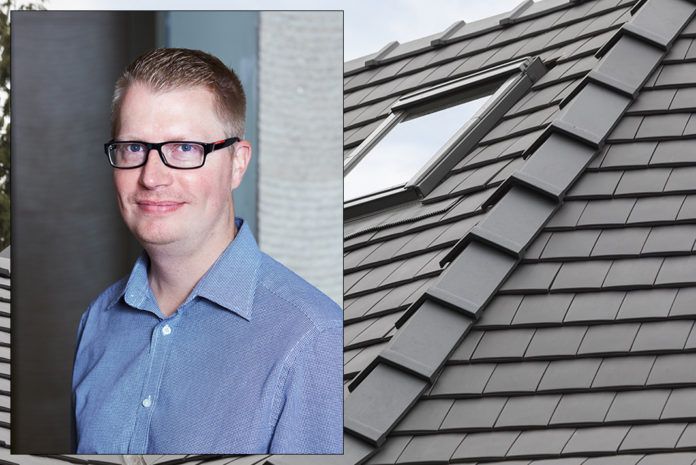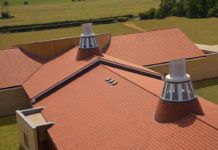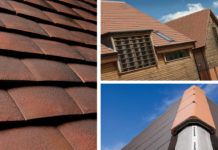Simon Button, product manager for roof at Wienerberger, talks to RCI about the popularity of the clay plain tile which shows no sign of waning in favour just yet.
As one of the oldest forms of roof coverings in the UK, the clay plain tile has been a part of our heritage and roofscape for hundreds of years. With inherent charm and character, plain tiles are one of the most enduring and appearing building materials around today.
Small and rectangular in format, the proportions of plain tiles have remained unchanged for over 500 years. The signature flat plain tile shape was said to be originally inspired by wooden shingles, with clay tiles becoming the roofing material of choice following a decree from King John in 1212 prohibiting the use of combustible roofing materials such as thatch.
Typically seen in the south of England, plain tiles are still manufactured to the dimensions standardised by King Edward IV in 1477 (10 1/2 x6 1/4 x 5/8 inches). This fixed size was set to stop tile-makers skimping on clay and creating smaller than expected roof tiles, so their customers would have enough tiles to cover their roofs.
Thanks to the clay plain tile’s historical origins, this design is ideally suited to traditional architecture and restoration work, but it is also frequently used on contemporary builds. Available in a variety of colours and textures, plain tiles can be handmade for a slightly irregular and rustic look, or machine-made for a cleaner, uniform aesthetic. Subtle variations can also be seen between single camber plain tiles (curved from top to bottom) and those that are double / cross camber (curved from top to bottom and left to right).
The subtle variations in colour and tone created from the way that natural clay is fired can look spectacular across the expanse of a tiled roof. With plain tiles being a standard size, different designs can also be mixed together to create a unique effect. To replicate the intricate design detailing on period structures, plain tiles can also be fashioned into ornamental shapes such as arrow head, bullnose, club and fishtail.
Traditional clay plain tiles – like slates – are uniform in shape and have no side interlocks, allowing water to enter through the gaps in between the tiles. To drain this water away safely, there must be another tile underneath each joint, hence the “double lap tiling” technique is used when installing plain tiles. They are designed to be laid with a broken bond, with only the bottom third of each tile. This means that at any point on the roof there is at least a double layer of tiles, with three tile layers at the headlap.
This double lap tiling method of waterproofing a roof creates a level of detail, texture and proportion that defines the plain tile look, and is the reason they have remained so popular over the years. This overlapping makes plain tiles one of the most flexible roofing materials available, as well as being an economic vertical cladding solution for first floor level installations. As clay roof tiles hold their colour and weather naturally, they complement other clay walling materials such as bricks.
Double lapped plain tiles lend themselves particularly well to complex detailing or curved roofing features because they simply ‘butt’ together and can therefore be cut to adjust linear coverage and maintain the curve. Plain tiles can also complement larger format roof coverings when used on smaller roof details such as porches and dormers.
As many of today’s roofing contractors and customers are looking for a beautiful yet affordable and time-saving solutions when choosing a roof tile, the plain tile been updated to include modern design features to make installation easier. By adding an interlocking system and drainage channels to improve the performance of plain tiles, this negates the need to have a double tile layer. This reduces how many tiles are needed, how long they take to install and the total weight of the roof, resulting in material and labour cost-savings. As these modern clay plain tiles give greater control over water and ingress, they can often be used at lower roof pitches. Concrete versions of plain tiles are also widely available.
In summary, the timeless quality of the clay plain tile means that it has a promising future and is showing no signs of disappearing into architectural history just yet. Our customers have an appreciation for the age-old handmaking skills and long established craftmanship required to produce a traditional plain tile, which can’t be beaten when it comes to heritage projects. As for modern plain tiles, roofing contractors and housebuilders value the benefits that innovative design features bring to their projects. Due to their incomparable versatility, plain tiles have the capability to produce both simple and complex roofscapes for newbuild and renovation projects that are anything but plain and boring.




